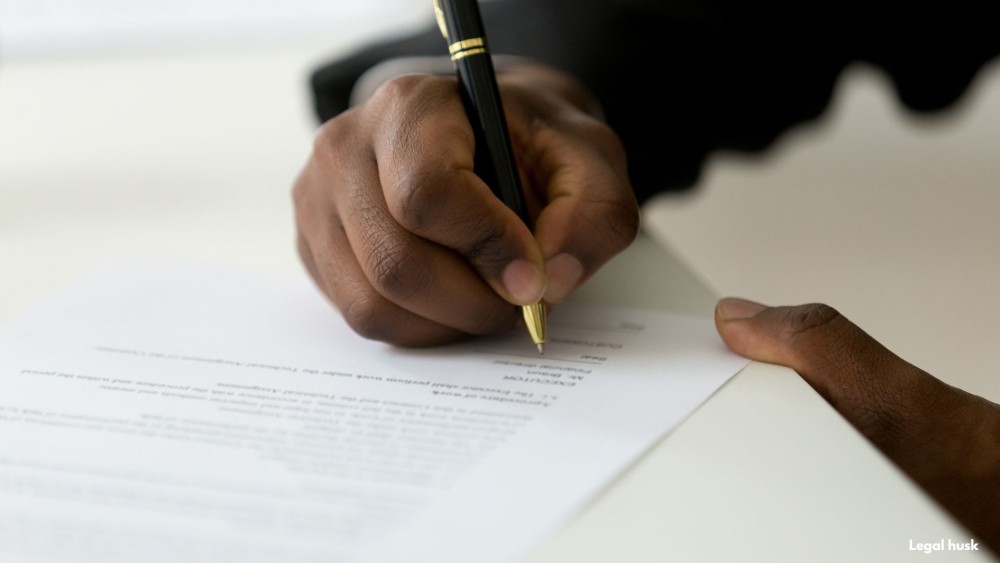
Wrongful death cases are emotionally charged and legally complex. Here’s how to draft a Civil Answer that responds effectively and protects your client in such sensitive litigation.
Wrongful death claims are some of the most sensitive cases in civil litigation. These cases not only involve the emotional toll of loss but also demand a careful and strategic approach to defending the case. The defendant's Answer in a wrongful death lawsuit serves as the first line of defense, setting the stage for how the case will be litigated.
In this article, Legal Husk walks through how to draft a Civil Answer in wrongful death cases—focusing on both the legal and emotional considerations.
✅ Wrongful death cases often involve sensitive issues:
Plaintiffs are typically family members who are grieving.
The damages sought can be high, including both economic and non-economic losses (e.g., pain and suffering, loss of companionship).
🎯 While emotional considerations are vital, your Answer should focus on the legal issues to avoid conceding unnecessary grounds for liability.
✅ In wrongful death cases, the allegations will often focus on negligence or intentional misconduct:
Deny allegations of negligence unless the facts clearly support the claim.
For example, in a traffic accident case, deny the plaintiff’s version of events if it’s disputed, or clarify any misunderstandings about liability.
Example:
“Defendant denies that their actions were the proximate cause of the death of [Name]. Defendant asserts that the cause of death was unrelated to their conduct.”
✅ If applicable, assert comparative negligence or contributory negligence defenses:
Contributory negligence can bar recovery if the plaintiff’s actions contributed to the fatal event.
Comparative fault can reduce the plaintiff’s recovery based on their percentage of fault.
Example:
“Defendant asserts that the decedent’s own negligence contributed to the cause of the incident, including but not limited to [details].”
🎯 Introducing comparative negligence can reduce damages and strengthen your client’s position.
✅ Common affirmative defenses to include:
Statute of limitations: The claim may be barred if it was not filed within the legally required time frame.
Intervening cause: Argue that an event independent of the defendant’s actions was the proximate cause of the death.
Example:
“Defendant asserts that the claim is barred by the statute of limitations, as the complaint was filed more than [X] years after the date of the incident.”
✅ Carefully navigate factual admissions:
Denial: Deny claims that are contested, such as the cause of the accident or the degree of the defendant’s responsibility.
Admission: In cases where the facts are undisputed (e.g., defendant was involved in the accident), admit the facts but deny liability.
Example:
“Defendant admits that they were involved in the incident but denies that their actions were the proximate cause of the decedent’s death.”
✅ While it’s important to remain professional and legal, acknowledge the emotional complexity of the case:
Do not use overly aggressive or dismissive language. While denying liability, maintain a tone that recognizes the gravity of the situation.
🎯 A respectful tone fosters cooperation and may help with settlement discussions later on.
✅ Wrongful death cases can be resolved through mediation or settlement discussions:
If your client is open to settlement, consider introducing the option early in your Answer by stating, “Defendant is open to discussing settlement or engaging in alternative dispute resolution.”
Avoid long delays that could further escalate emotions—early engagement with mediation can resolve the case more efficiently.
In a wrongful death case involving a car accident:
The defendant’s Answer denies allegations of negligence and introduces comparative fault, arguing that the decedent was not wearing a seatbelt, which contributed to the severity of the injuries.
The Answer also raises statute of limitations as a defense, noting that the plaintiff filed the lawsuit after the time limit had passed.
Result: The case proceeds with the defendant’s defenses clearly laid out, potentially opening the door for settlement negotiations.
Wrongful death cases are highly complex and require careful legal and emotional consideration. A well-drafted Answer can set the tone for the entire case, ensuring that your client’s defense is clear, strategic, and ready for the challenges ahead. By using denials, comparative fault, and thoughtful affirmative defenses, you can protect your client’s interests while navigating the sensitive aspects of the case.
At Legal Husk, we help attorneys craft Answers that are legally solid and emotionally respectful, ensuring the best possible outcome for clients involved in wrongful death litigation.
Need assistance drafting your Answer in a wrongful death case? Legal Husk ensures that your responses are both legally strong and emotionally sensitive.
📌 Ready to craft a defense that protects your client in wrongful death litigation?
👉 Visit:
🔗 legalhusk.com
🔗 legalhusk.com/services
🔗 legalhusk.com/about-us
Defend with respect, respond with strategy—Legal Husk.
📩
Ready for a court-ready Answer at a predictable price? Contact Legal Husk and let us draft your next litigation response with precision and clarity.
Whether you are dealing with a complex family matter, facing criminal charges, or navigating the intricacies of business law, our mission is to provide you with comprehensive, compassionate, and expert legal guidance.